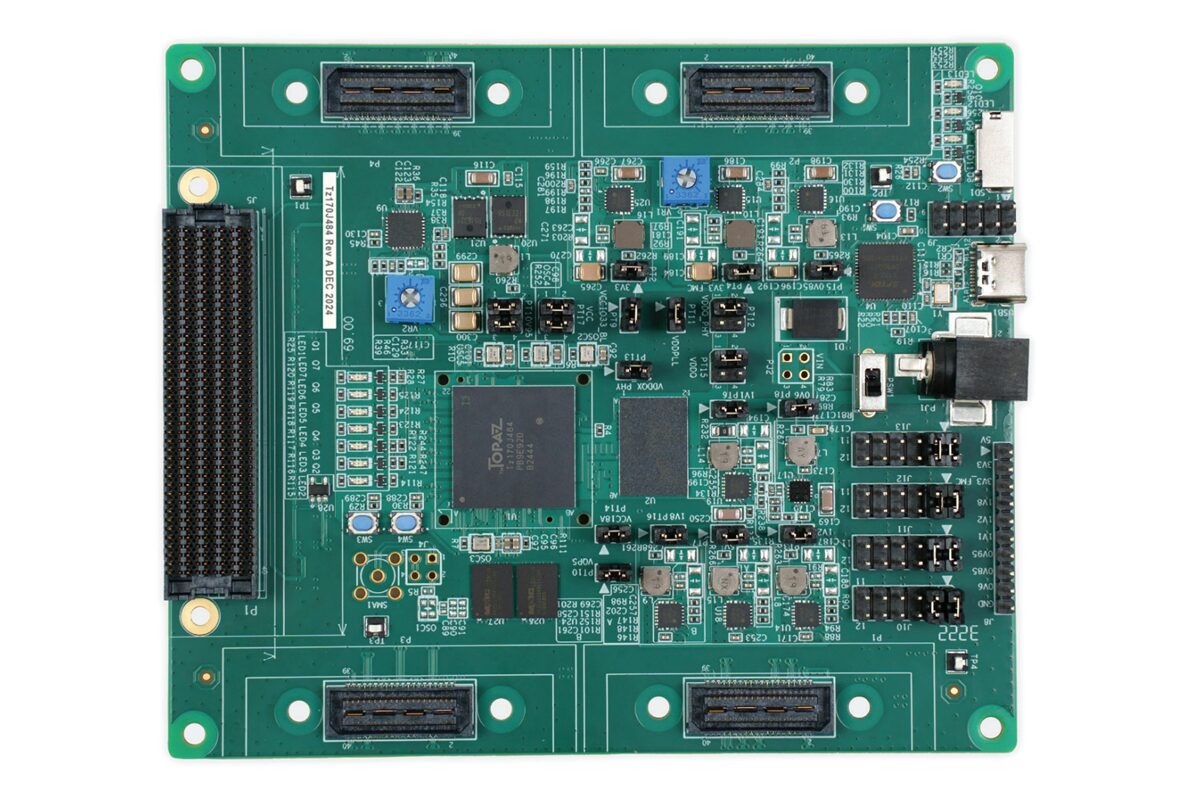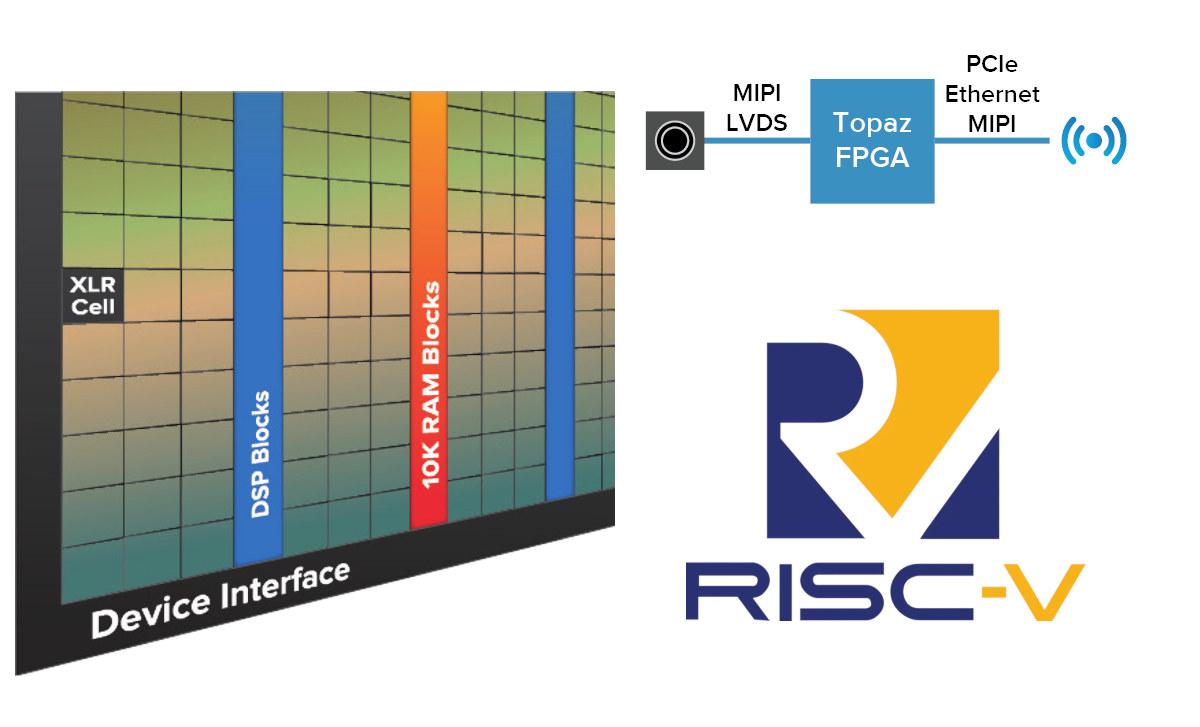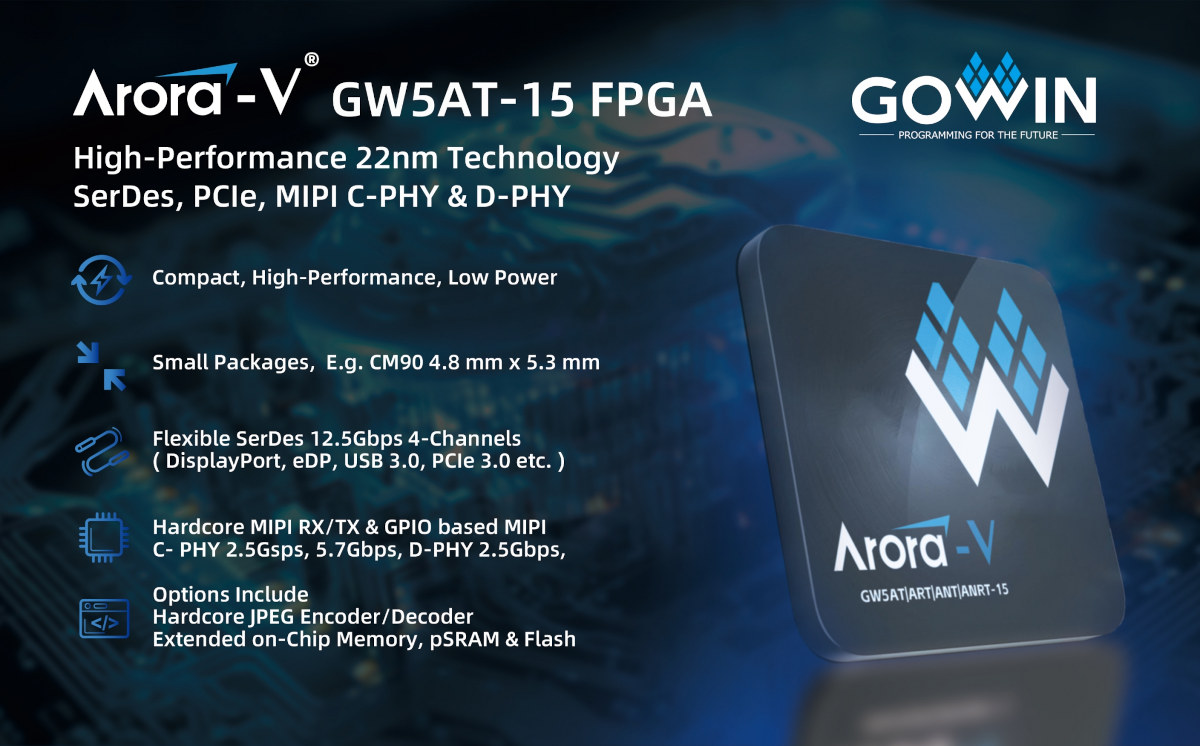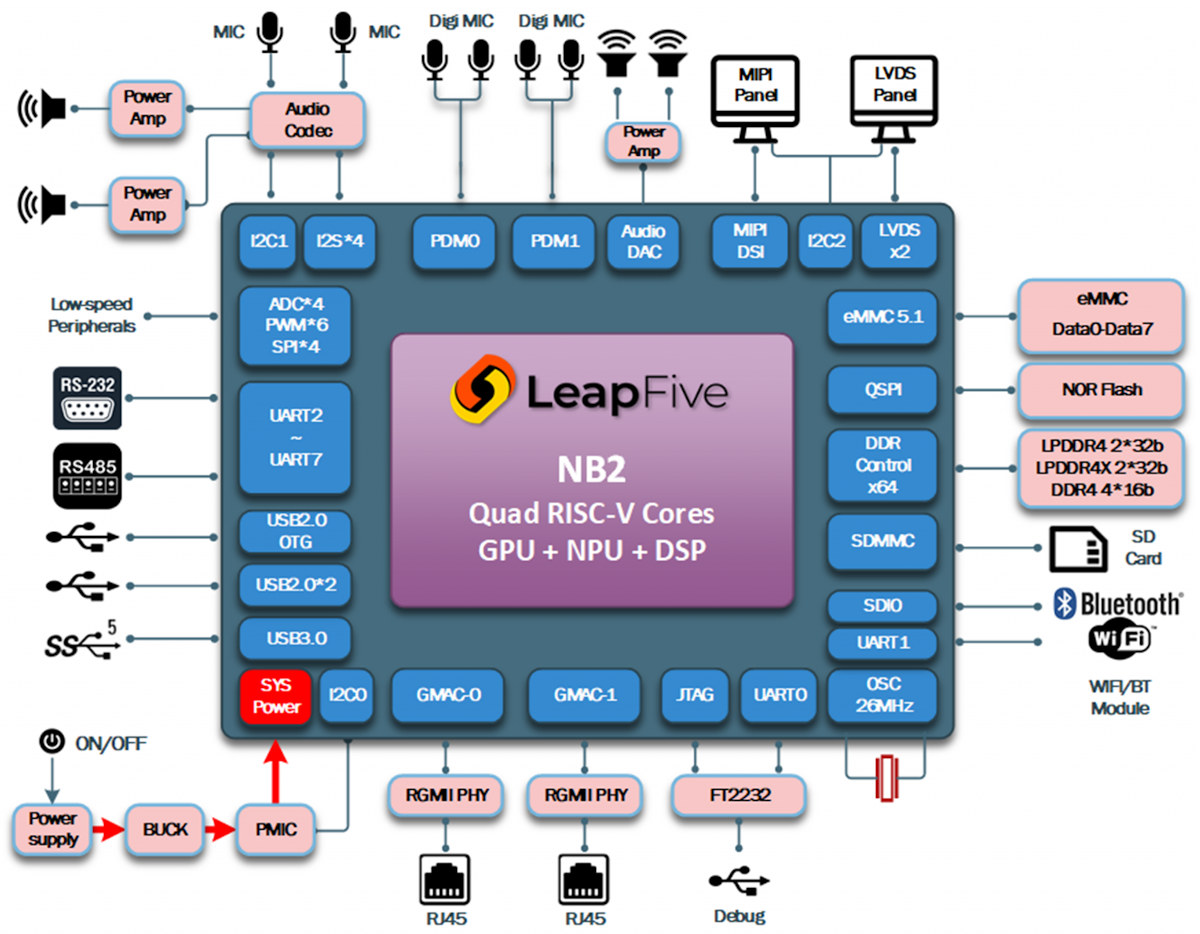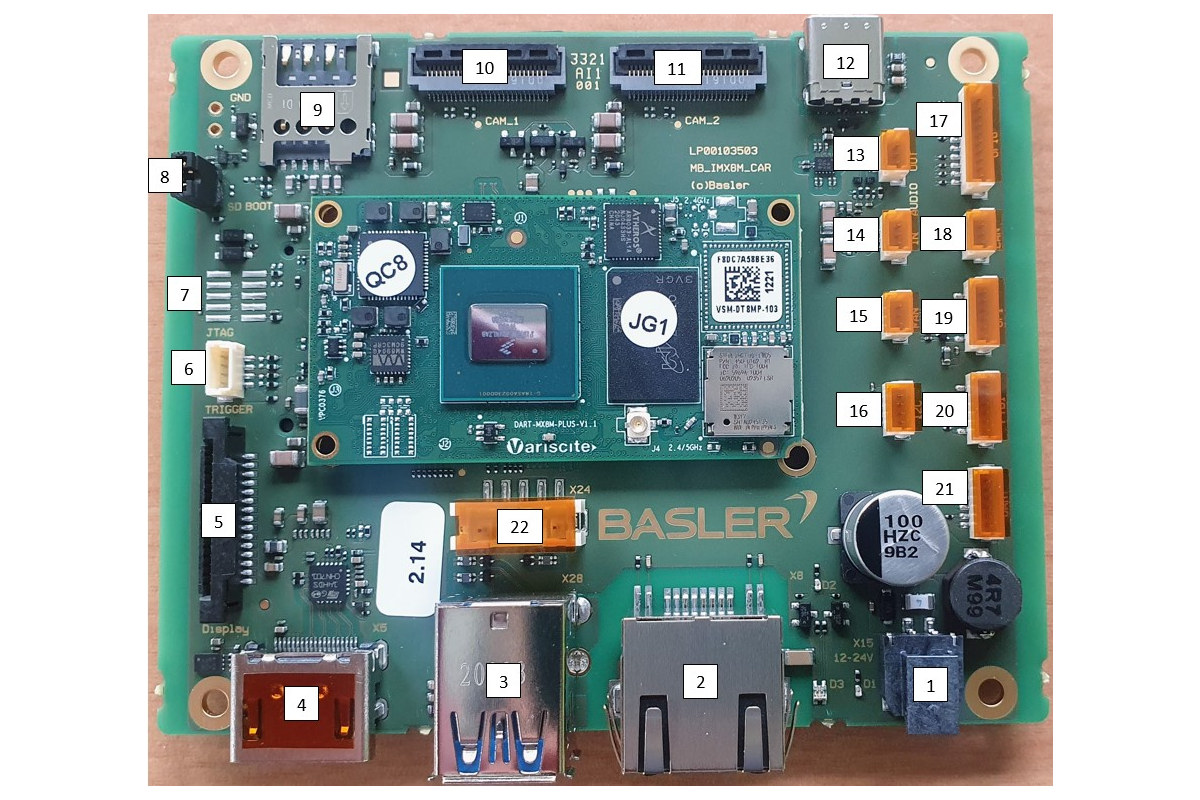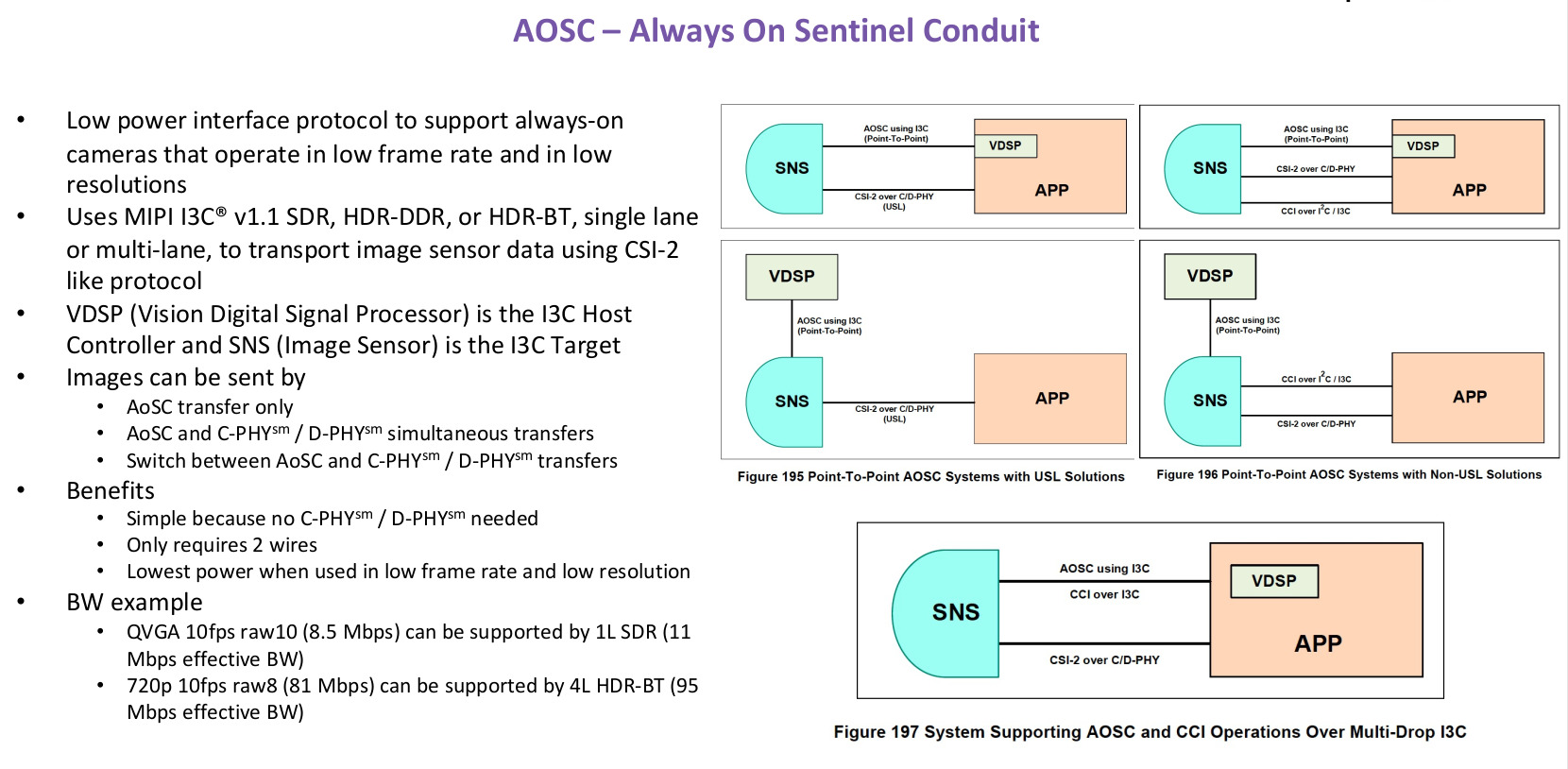The Topaz Tz170b FPGA devkit from Efinix is a compact FPGA evaluation platform built around the Efinix Tz170 FPGA. This FPGA is built around a low-power, high-density 16 nm Quantum fabric and comes in a compact 484-ball FineLine BGA package. The company mentions that the board supports hardware-level MIPI D-PHY with data rates of up to 2 Gbps per lane and hardware-level LPDDR4 memory controller, making it ideal for high-speed embedded systems, vision processing, and custom SoC designs. Additionally, it includes 256 Mbit of LPDDR4 memory, dual SPI NOR flash memories, and high-speed QSE connectors for Efinix or custom daughter cards. Expansion is further enabled by a low-pin-count FMC connector, a microSD slot, user LEDs, and push buttons. Clock options include 33.33, 50, and 74.25 MHz oscillators, and a full range of onboard regulated power sources for stable operations. These features make this device useful for applications like edge AI, […]
Synaptics Astra SR series Arm Cortex-M55 MCUs feature Arm Ethos-U55 NPU, low-power Cortex-M4 core with microNPU
Synaptics unveiled an extension to its Astra Native AI platform with the new SR series of MCUs. This new product family, unlike the Astra SL series released last year, isn’t comprised of Linux-capable application processors. Instead, the Arm Cortex-M55 microcontrollers focus on providing high-performance, AI-native processing for Edge AI applications leveraging a built-in Arm Ethos-U55 NPU. Built on the Arm Cortex-M55 core and the Arm Ethos-U55 neural processing unit (NPU), these MCUs are optimized for multimodal applications, including vision, audio, and voice processing. As indicated in the MCU’s block diagram (see below), the SR series also features an optional low processing SoC unit featuring an Arm Cortex-M4 @ 100MHz and a Synaptics micro NPU engine. Such a provision in this MCU is what allows the three operation tiers the company offers with the MCU series: performance, efficiency, and ultra-low-power modes, allowing intelligence across various power levels. The MCU can switch […]
Efinix introduces the low-power Topaz RISC-V SoC FPGA family for “high-volume, mass-market applications”
Efinix Topaz is a new low-power RISC-V SoC FPGA family manufactured with the same 16nm TSMC process as the Efinix Titanium SoC FPGA, but optimized for high-performance in a low-power footprint, and targetting high-volume, mass-market applications. The Topaz SoC FPGAs provide fewer features than the Titanium family but still offer up to four RISC-V hard cores, PCIe Gen3, MIPI interfaces, LPDDR4, LVDS, and 12.5 Gbps transmitter with most features being optional and depending on the exact SKUs selected. Efinix Topaz key features and specifications: FPGA compute fabric Up to 326,080 logic elements (LEs) Up to 19.22 Mbits embedded memory Up to 1,877 10-Kbit SRAM blocks Up to 1,008 embedded DSP blocks Memory – 10-kbit high-speed, embedded SRAM, configurable as single-port RAM, simple dual-port RAM, true dual-port RAM, or ROM FPGA interface blocks Optional 32-bit quad-core hardened RISC-V block (RISCV32I with M, A, C, F, and D extensions and six pipeline […]
GOWIN GW5AT-15 low-cost FPGA provides high-speed video interfaces up to 4K at 120 FPS
GOWIN Semiconductor has just announced the “Arora V” GW5AT-15 FPGA designed for high-speed video interfaces up to 4K at 120 FPS in space-constrained consumer and automotive applications. Manufactured with TSMC’s 22nm LP process, the new FPGA offers high-performance 12.5 Gbps SerDes, PCIe 3.0, MIPI CPHY, and DPHY interfaces. The GW5AT-15 FPGA also provides 15K LUTs of programmable logic, 118kbit of shadow SRAM, 630kbit of block SRAM (BSRAM), optional 64Mbit or 128Mbit of pseudo-SRAM (PSRAM), and optional 8Mbit of NOR Flash in a tiny 4.9mm x 5.3mm WLCSP package. Target applications include AR/VR headsets, 4K gaming tablets, and car infotainment systems. GOWIN GW5AT-15 FPGA specifications: FPGA Fabric 15120 logic elements (LUT4) 118kbit of shadow SRAM 630kbit of block SRAM (BSRAM) arranged as 35 x 18kbit 28x DSP slices, 12x DSP Lite slices PSRAM GW5ART-15: 64Mbit (in MG132P package) or 128Mbit (in CM90P package) of pseudo SRAM (PSRAM) GW5ANRT-15: 64Mbit PSRAM DDR […]
LeapFive NB2 quad-core RISC-V processor comes with GPU, NPU, and DSP
After SiFive and StarFive, here comes LeapFive RISC-V silicon vendor offering the NB2 quad-core 64-bit RISC-V application processor with GPU, NPU, and vision and audio DSPs capable of running Linux. LeapFive NB2 processor is equipped with MIPI DSI and LVDS display interface, dual GbE, USB 3.2/2.0 interfaces, and other peripheral interfaces that make it well-suited to a wide range of applications including Smart Home applications, robotics, industrial gateways, drones, building automation, smart cities, digital signage, medical equipment and more. LeapFive NB2 specifications: CPU – Quad-core SiFive U74 64-bit RISC-V processor @ 1.8 GHz delivering 2.5 DMIPS/MHz Cache – 32KB I-cache, 32KB D-cache, 2MB level 2 cache GPU – “High-performance graphics processor” @ 850 MHz DSP – Dedicated vision DSP, audio DSP NPU – Independent AI engine delivering up to 4 TOPS @ 1.4 GHz VPU – 4Kp60 H.264/H.265 Video encoding and decoding, JPEG image codec System Memory – Up to […]
Orange Pi 4 SBC gets 10.1-inch LCD touchscreen
Shenzhen Xunlong Software has released a 10.1-inch LCD touchscreen for the company’s Orange Pi 4 single board computer powered by a Rockchip RK3399 hexa-core Cortex-A72/A53 processor. The MIPI DSI display is based on Ilitek ILI9881c panel controller supported in mainline Linux, offers 1280×800 resolution, and besides working with the original Orange Pi 4, it’s also compatible with Orange Pi 4B (with AI accelerator) and the more recent Orange Pi 4 LTS SBC launched earlier this year. 10.1-inch LCD touchscreen specifications: Display Controller – Ilitek ILI9881C (See PDF datasheet) 10.1-inch panel size 1280×800 resolution @ up to 60Hz, with 16.7 million colors Luminance – 250 cd/m2 (or nit) Backlight – 27x white LEDs Brightness control with PWM 10-point multi touchscreen Host interface – MIPI DSI Dimensions Active area – 216.58 x 135.36 mm Outline dimensions – 228.6 x 143 x 2.7 mm Weight – TBD Temperature Range – Operating – 0 […]
Basler prB-IMX8MP embedded vision processing kit supports BCON for MIPI, GigE Vision, and USB3 Vision cameras
Basler prB-IMX8MP is a Linux-based, NXP i.MX 8M Plus powered embedded vision processing kit working with the company’s cameras designed for factory automation, medicine, traffic and several other markets. The board is equipped with Variscite DART-MX8M-Plus system-on-module and offers multiple camera interfaces to support BCON for MIPI, GigE Vision, and USB3 Vision cameras through Basler’s pylon Camera Software Suite. Basler prB-IMX8MP specifications with interfaces in bold usable by Basler cameras: SoC – NXP i.MX 8M Plus quad-core Cortex-A53 processor clocked at up to 1.8GHz, Cortex-M7 real-time core @ 800 MHz, 1080p H265/H264 encode/decode, AI/ML accelerator up to 2.3 TOPS, Vivante GC7000UL 3D GPU, Vivante GC520L 2D GPU System Memory – 8GB (CNXSoft: Probably a mistake since the DART-MX8M-PLUS module only supports 1GB to 4GB RAM. Is it 8 Gbit = 1GB?) Storage – 64 GB flash, MicroSD card slot Video Output – HDMI 2.0a up to 1080p60, 2-lane MIPI DSI […]
MIPI CSI-2 v4.0 adds features for always-on, low power machine vision applications
While MIPI CSI-2 standard was first introduced in 2005 as a high-speed protocol for the transmission of still and video images from image sensors to application processors, the standard has evolved over the years, and the latest MIPI CSI-2 v4.0 introduces features to better support always-on, low power machine vision applications, high-resolution sensors, and high-dynamic-range automotive image sensors. The main changes for v4.0 include support for a two-wire interface (MIPI I3C) to lower cost and complexity, multi-pixel compression for the latest generation of advanced image sensors, and RAW28 color depth for better image quality and an improved signal-to-noise (SNR) ratio. MIPI CSI-2 v4.0 highlights: Always-On Sentinel Conduit (AOSC) – Enables always-on machine vision systems with ultra-low-power image sensors and video signal processors (VSPs) continuously monitoring their surrounding environments and having the ability to wake up their more powerful host CPUs when specific events happen. Some use cases include laptop/tablet-based face […]


